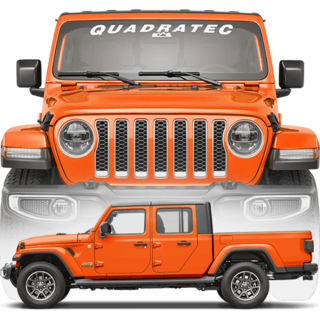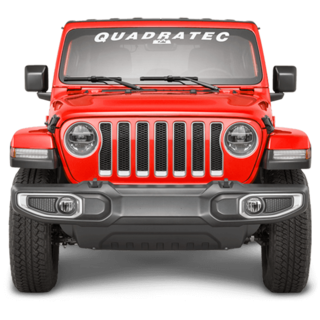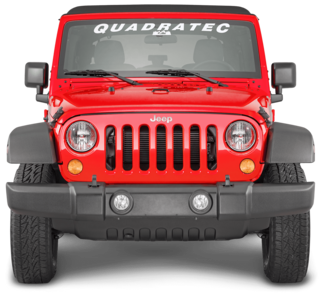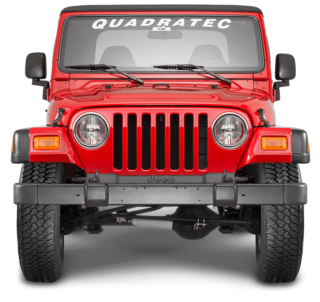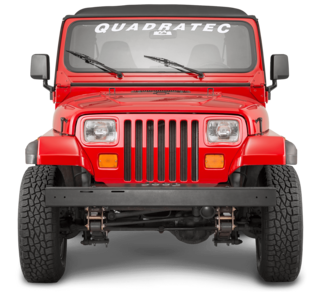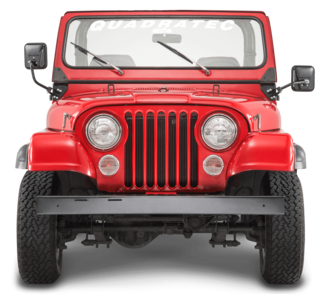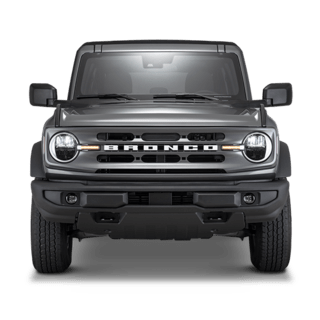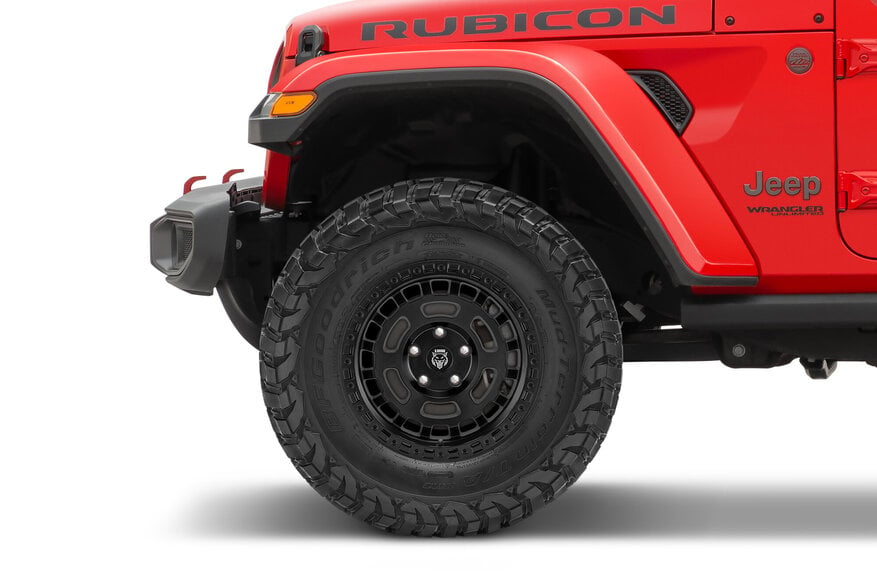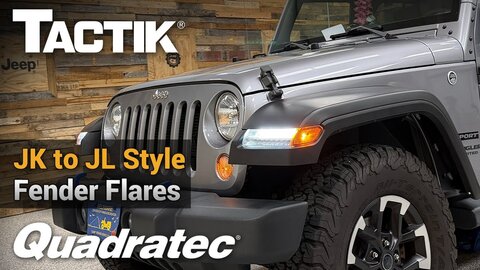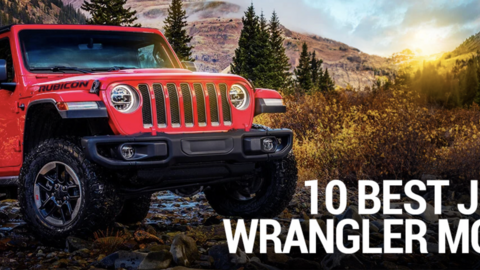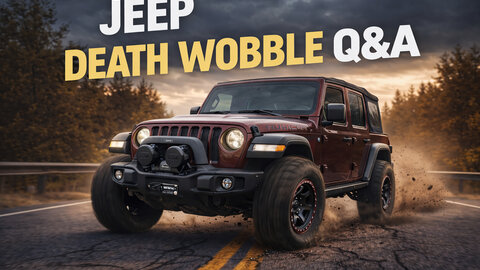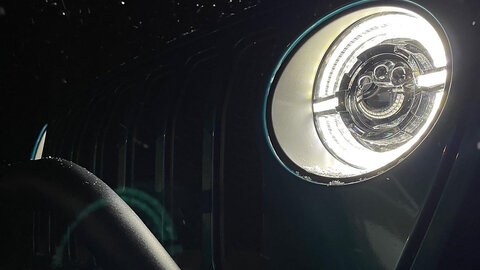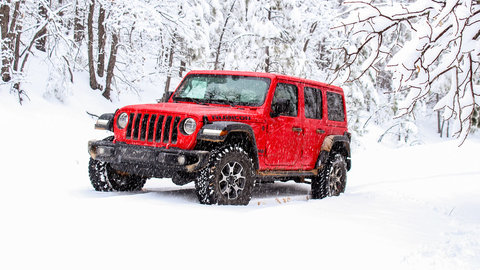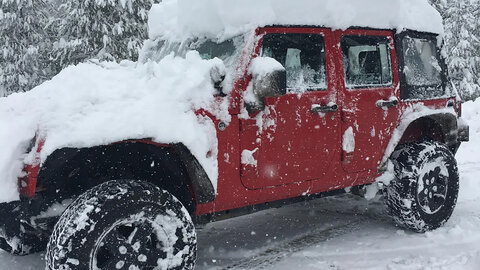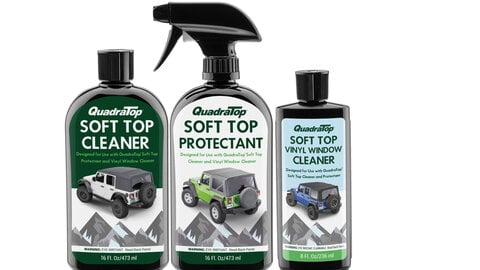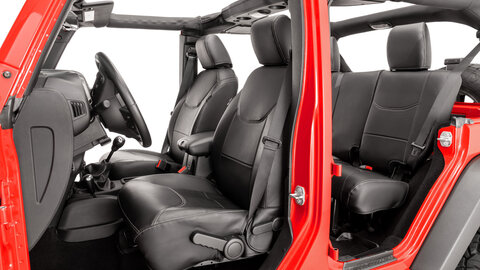by Matt Konkle
Managing Editor
They can be shiny or muted. Some have a classic spoke appearance, while others have a modern, eye-pleasing aesthetic that could be solid, cut out, or numerous other designs. Or, they can be wider and lighter than factory versions for those who need that extra clearance.
Yup, aftermarket Jeep wheels come in multiple styles and shapes, and upgrading to a set of these is one of the most impactful modifications a Jeep owner can make.
See, factory wheels are designed to meet general driving needs but lack the strength, weight and measurements aftermarket styles offer.
Swapping to non-factory wheels can give you the offset and backspacing you need when adding larger tires and a lift kit—allowing you more versatility when off-roading. They are also usually lighter than stock wheels, improving fuel efficiency, acceleration and handling.
However, what is the right choice for you with so many styles and options available?
Well, whether you're a new Jeep owner or a seasoned off-roader, understanding the key factors behind wheel selection is essential to avoiding costly mistakes and ensuring the perfect fit for your Wrangler, Gladiator, or other Jeep model.
So, we’ve compiled a list of top Jeep Wheels questions to help you make an informed purchasing decision.
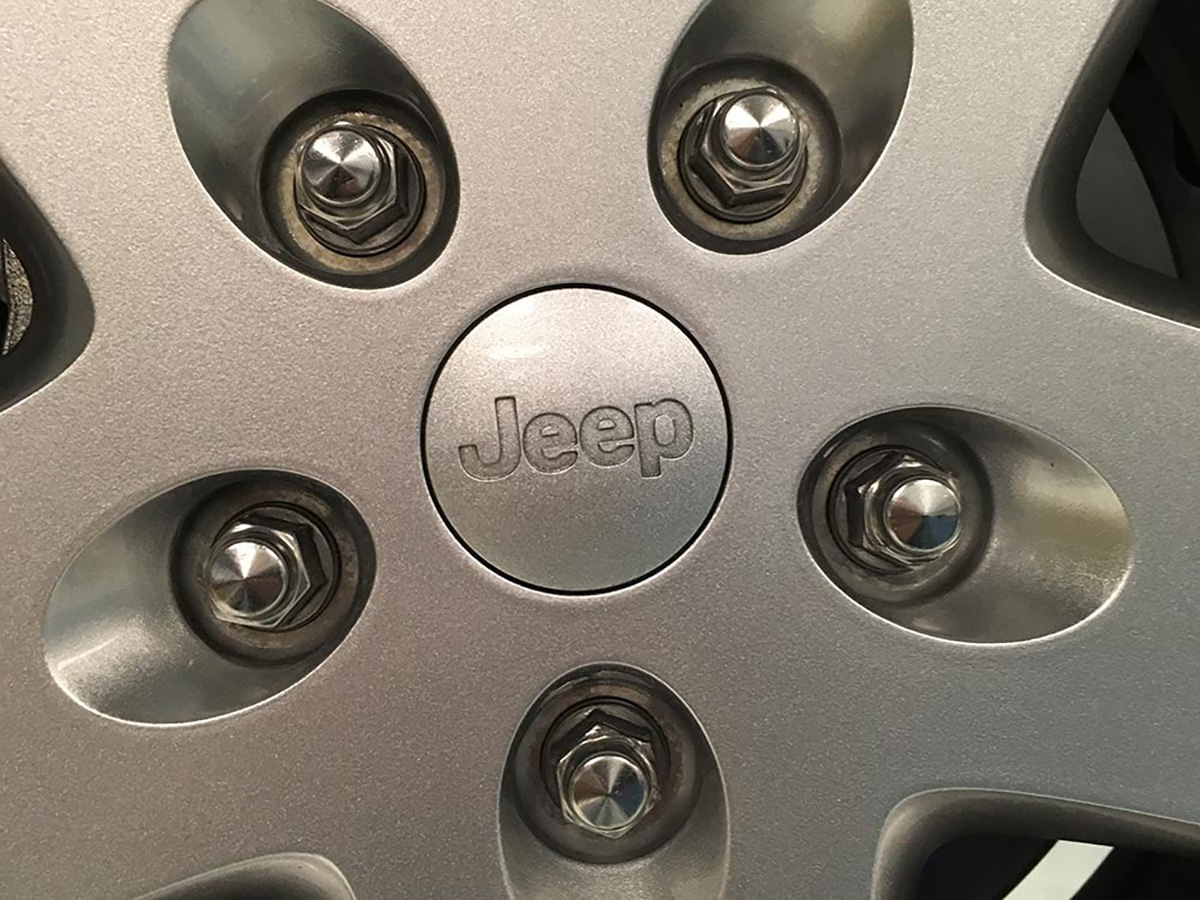
What is the bolt pattern for Jeep Wrangler or Gladiator wheels?
Most Jeep Wranglers (JK, JL and Gladiator JT) have a 5x5" (5x127mm) bolt pattern. Older models, such as the TJ and YJ, use a 5x4.5" (5x114.3mm) bolt pattern. Don’t assume just because you like a certain rim look, that it will fit your vehicle. Always check your specific Jeep model and ensure your Jeep wheel choice has a bolt pattern that fits what you drive.
What size wheels fit a Jeep Wrangler?
Almost all trim-level JK and JL Wranglers come with 17-inch wheels from the factory. However, Sahara edition vehicles utilize an 18-inch wheel. For most applications, a 17-inch wheel is the most popular aftermarket replacement as it provides the perfect balance between street and off-road use. For the TJ Wrangler, most came with 15-inch wheels from the factory, but Rubicon editions did offer a 16-inch wheel. On the older YJ Wranglers, a 15-inch wheel was factory.
What’s the largest tire size I can put on aftermarket Jeep Wheels?
Without installing a body or suspension lift, you can fit up to a 33-inch tire on a JK Wrangler, or a 35-inch tire on a JL Wrangler and JT Gladiator. If you have a Rubicon trim level JL or JT with high clearance flares, then you can comfortably fit 35-inch tires. You could even go up to a 37-inch tire on that package, but you’ll have some rubbing and articulation issues on a stock suspension.
Moving to the Wrangler YJ and TJ versions, you can usually go up to a 31-inch tire on that factory suspension without issues.
When you add a 2- to 3-inch suspension lift, you can apply 35-inch tires on a JK, or up to 37-inch tires on the JL or JT. By adding a 4-inch lift, you can install up to 40-inch tires. However, with a tire that size, you start bumping into issues like stress on the factory axles and suspension components.
In our experience, a 2.5-inch suspension lift, with either 35-inch tires on a JK, or 37-inch rubber on a JL or JT, provides the ideal fitment on aftermarket Jeep Wheels—especially for those looking to off-road or overland.
What is wheel offset and backspacing?
The quick version: offset determines how far the wheel sticks inward or outward. A positive offset tucks the wheel inside the fender, while a negative offset pushes the wheel outward, allowing for a wider vehicle stance. Meanwhile, backspace is the distance from the wheel mounting surface to the back edge of the wheel.
Most stock Jeeps typically have around 5- to 6-inch backspacing on factory wheels. By swapping to aftermarket wheels, you can reduce that backspacing to 4.5 inches or less to clear larger tires and enhance your off-roading experience.
Can I put wider tires on my stock Jeep wheels?
Yes, you can install wider tires on the factory wheels, but these tires may require wheel spacers to prevent rubbing. Stock wheels usually support tires up to 12.5 inches wide with spacers. However, to ensure the best performance for those new wider tires, you should consider a set of aftermarket wheels because, again, their backspacing and offset will provide the correct spacing.
What’s better for off-roading—steel or aluminum wheels?
With most manufacturers utilizing aluminum these days in their Jeep aftermarket wheels, they clearly believe that material is an overwhelming favorite among Jeep owners. However, it may not be what is best for you.
Aluminum wheels are lighter overall than steel and better for corrosion resistance over time. That weight reduction also makes the vehicle easier to handle, offers better fuel economy, and means the Jeep will run more smoothly. The wheels are also mixed with a few other metals to make them stronger and more durable to take on most types of off-roading or overlanding without breaking.
For the daily driver and most off-roading, aluminum wheels these days will hold up just fine.
So, why would anyone want steel wheels?
Well, steel wheels are more durable than aluminum in the toughest situations. Should these wheels slam into an obstacle, they will usually dent rather than break. In that case, they can be more easily repaired—sometimes right on the trail, with a hammer. Additionally, steel wheels are often more affordable than aluminum and can be painted to match a particular vehicle color scheme or other personalization.
However, these wheels are also heavier than aluminum, so those with other beefier components like bumpers, winches, tire carriers, etc., may not want this additional weight as well.
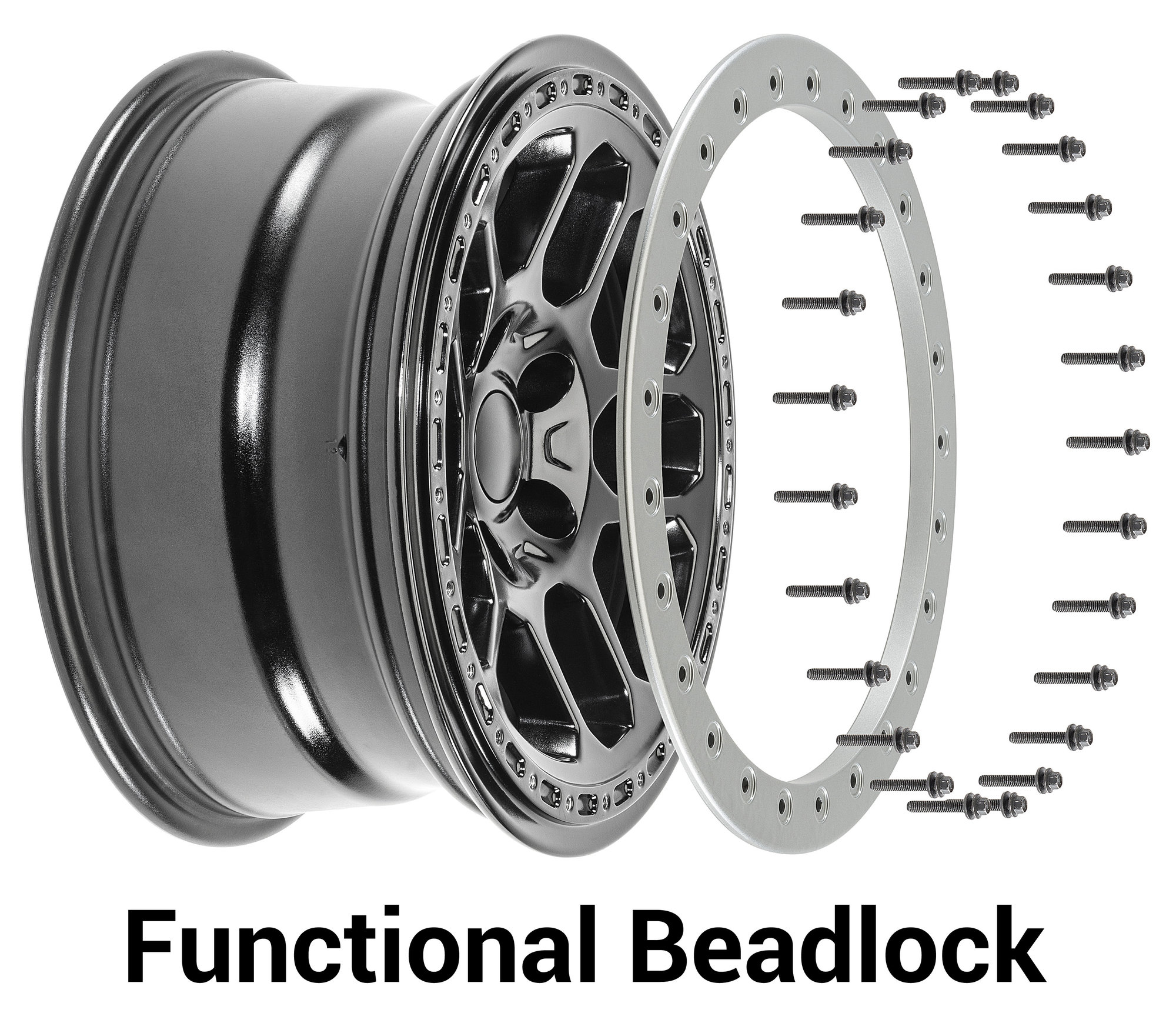
Do I need beadlock wheels for my Jeep?
The short answer—most likely no. However, it really depends on your off-roading or overlanding habits.
For those who don’t know, beadlock wheels are designed to prevent the tire from slipping off the rim when driving at very low tire pressures, which is imperative in extreme off-roading to increase traction. It does this with a locking ring that physically clamps the tire’s edge to the wheel, instead of using air pressure.
For Jeep owners who regularly tackle challenging trails with rocks, mud, or sand, beadlock wheels can increase a tire’s footprint by allowing air pressure as low as five pounds per square inch without causing the bead to separate—providing a smoother ride, superior traction and better shock absorption when attacking severe obstacles.
For Jeep owners who primarily use their vehicles for daily driving or normal off-roading, beadlock wheels are unnecessary because most people do not drop their tire pressure below 12 pounds per square inch even when off-pavement. Additionally, beadlock wheels are typically heavier and more expensive than standard wheels, which can impact fuel efficiency and overall vehicle performance. They also require constant maintenance to ensure they are working as intended.
Which is better: hub-centric or lug-centric aftermarket Jeep wheels?
In just about all situations, a hub-centric wheel will provide superior performance over lug-centric versions.
Hub-centric aftermarket Jeep wheels provide a more secure fit as they center the wheel directly on the vehicle’s hub—ensuring a precise fit. This allows the hub to bear the vehicle’s weight, reducing the risk of vibration and improving overall driving stability at all speeds.
Lug-centric wheels are centered and mounted using lug nuts instead of the hub, and these wheels have a larger center bore that does not fit as tight against the hub. These wheels are normally more economical and fit a wider range of Jeeps, so they could be a good alternative for those on a budget or wanting to swap between multiple vehicles.
Can I use wheels from another Wrangler on my Jeep?
Possibly. However, as mentioned earlier, not all Jeeps have the same bolt pattern, size, offset, or backspacing.
For example, if you own a 2020 Jeep Wrangler JL and your buddy has a 2001 Wrangler TJ, and you like his wheels, they will not directly fit on your vehicle as a TJ’s bolt pattern is 5x4.5 and the JL’s is 5x5. You can make it fit by adding a bolt pattern adapter/wheel spacer. However, a TJ’s wheel utilizes slightly less backspacing so that the wheel will sit closer to the vehicle, and you may need to do some fender modifications to ensure it fits without any rubbing.
We’ve compiled a handy chart here that provides the relavant information you’ll need to make a wheel conversion.
Will installing aftermarket Jeep wheels void my warranty?
No, aftermarket wheels will not automatically void your Jeep's vehicle warranty. Under the 1975 Magnuson-Moss Warranty Act, a dealership or manufacturer cannot deny warranty coverage simply because you installed aftermarket parts—unless they can prove that the aftermarket wheels directly caused the issue or failure you’re trying to have repaired under warranty.
For example, if you install aftermarket wheels and later have an engine or electrical issue, your warranty should still be valid because the wheels do not impact those systems. However, if you install oversized wheels and tires that cause premature wear on suspension components or damage to wheel bearings, then the dealer may refuse to cover those specific repairs.

